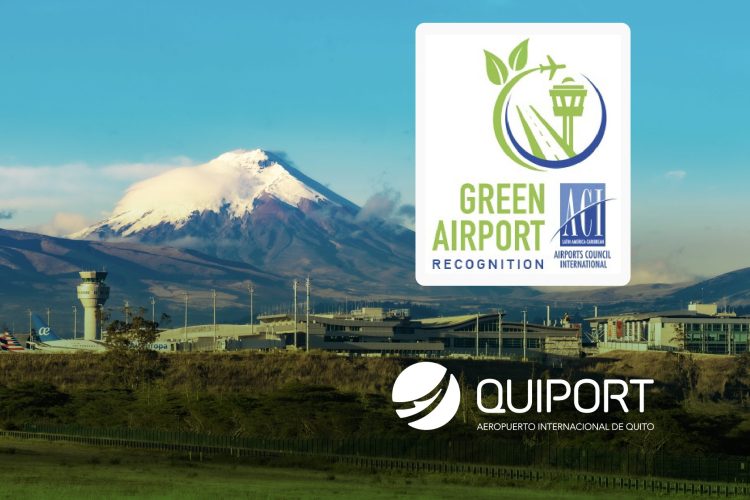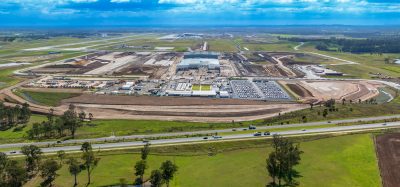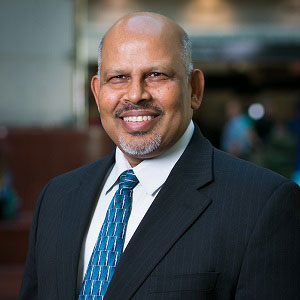Quito airport recognised for pioneering biodiversity integration while maintaining safe and efficient air operations
Posted: 16 October 2025 | Gabriel Higgins | No comments yet
Mariscal Sucre International Airport has transformed part of its land into a wildlife sanctuary, demonstrating how biodiversity and aviation can coexist safely and sustainably.


Credit: Quiport Airport
Quito’s Mariscal Sucre International Airport (UIO) has been awarded the Green Airport Recognition 2025 by Airports Council International for Latin America and the Caribbean (ACI-LAC), acknowledging its pioneering “Laboratorio Natural UIO” (UIO Natural Laboratory) project. Under the leadership of Corporación Quiport, the airport has transformed 150 hectares of its land into a living space for conservation, ecological restoration, and applied scientific research, creating a model for sustainable aviation worldwide.
Unlike traditional airport management approaches that seek to exclude wildlife for safety reasons, Quito Airport has demonstrated that biodiversity can coexist safely with air operations. The initiative integrates careful planning, continuous scientific monitoring, and responsible environmental management to maintain operational safety while supporting ecological restoration.
Over the past decade, more than 72 hectares of Andean dry forest have been restored with native species. This reforestation captures approximately 400 tons of CO₂ annually, regenerates essential ecosystem services, and supports over 100 species, including endemic and threatened animals such as the Quito marsupial frog, the Andean rabbit, and Soderstrom’s harvest mouse. Camera trap and satellite monitoring studies have confirmed the presence of Andean foxes, with home ranges extending up to 7.8 square kilometres, indicating that the airport serves as a safe refuge for wildlife.
The project also demonstrates practical operational benefits. Raptors, including owls, naturally control rodent populations, reducing potential risks on the runway. In the past two years, more than 160 rescued wild animals, including birds, mustelids, and snakes, have been rehabilitated and released into the sanctuary, coordinated with the local environmental authority. Staff and nearby communities participate in citizen science programmes and wildlife observation, strengthening the link between conservation and airport operations.
Ramón Miró, President and CEO of Quiport, commented: “The Laboratorio Natural UIO is a source of pride for Quito and for the Latin American airport sector. Since the construction and start of operations, Quiport has worked to understand the ecosystem in which we operate and to design projects that restore and conserve it. I thank ACI-LAC for recognising the initiatives that airports across Latin America and the Caribbean are implementing to protect the environment.”
Rafael Echevarne, Director General of ACI-LAC, added: “Quiport has shown that an airport can be both a driver of connectivity and an ally of the environment. At ACI-LAC, through the Green Airport Recognition program, we celebrate its commitment to biodiversity integration and the implementation of Nature-Based Solutions, reflecting the purpose of our initiative, to promote a more sustainable and environmentally conscious aviation sector in Latin America and the Caribbean.”
The recognition was presented during the ACI-LAC Annual Assembly, Conference, and Exhibition 2025, held in Trinidad and Tobago, attended by airport industry leaders across the region. This award marks the third environmental project by Quiport to receive the Green Airport Recognition, further consolidating Mariscal Sucre International Airport as a benchmark for sustainable airport management in Latin America.
By prioritising ecological restoration, wildlife protection, and operational safety, the Laboratorio Natural UIO illustrates how airports can integrate Nature-Based Solutions into their operations. It offers a replicable model for other airports worldwide, showing that biodiversity conservation and aviation efficiency are not mutually exclusive.
Through the project, Quito Airport highlights the value of long-term environmental stewardship, the importance of community engagement, and the role of airports as catalysts for sustainable development. The initiative demonstrates that large-scale aviation infrastructure can coexist harmoniously with nature while contributing to climate mitigation, habitat restoration, and scientific research.
With its innovative approach and international recognition, Mariscal Sucre International Airport positions itself as a global leader in sustainable aviation and biodiversity integration, setting new standards for the future of environmentally conscious airport management.
Stay Ahead in Aviation — Subscribe for Free!
Get exclusive access to the latest aviation insights from International Airport Review — all tailored to your interests.
✅ Expert-Led Webinars – Learn from industry leaders
✅ Weekly News & Reports – Airport updates, thought leadership, and exclusive interviews
✅ Event Invitations – Be part of the International Airport Summit
✅ Partner Innovations – Discover the latest industry trends
Choose the updates that matter most to you. Sign up now and stay informed, inspired, and connected — all for free!
Thank you for being part of our community. Let’s keep exploring the future of aviation together!
Stay Connected with International Airport Review — Subscribe for Free!
Get exclusive access to the latest airport and aviation industry insights from International Airport Review — tailored to your interests.
✅ Expert-Led Webinars – Gain insights from global aviation leaders
✅ Weekly News & Reports – Airport innovation, thought leadership, and industry trends
✅ Exclusive Industry Insights – Discover cutting-edge technologies shaping the future of air travel
✅ International Airport Summit – Join our flagship event to network with industry leaders and explore the latest advancements
Choose the updates that matter most to you.
Sign up now to stay informed, inspired, and connected — all for free!
Thank you for being part of our aviation community. Let’s keep shaping the future of airports together!
Related topics
Airport construction and design, Airport development, Airport leadership, Airside operations, Biodiversity, Safety, Sustainability, Terminal operations, Wildlife hazards
Related airports
Related organisations
Airports Council International for Latin America and the Caribbean (ACI-LAC), Corporación Quiport


















